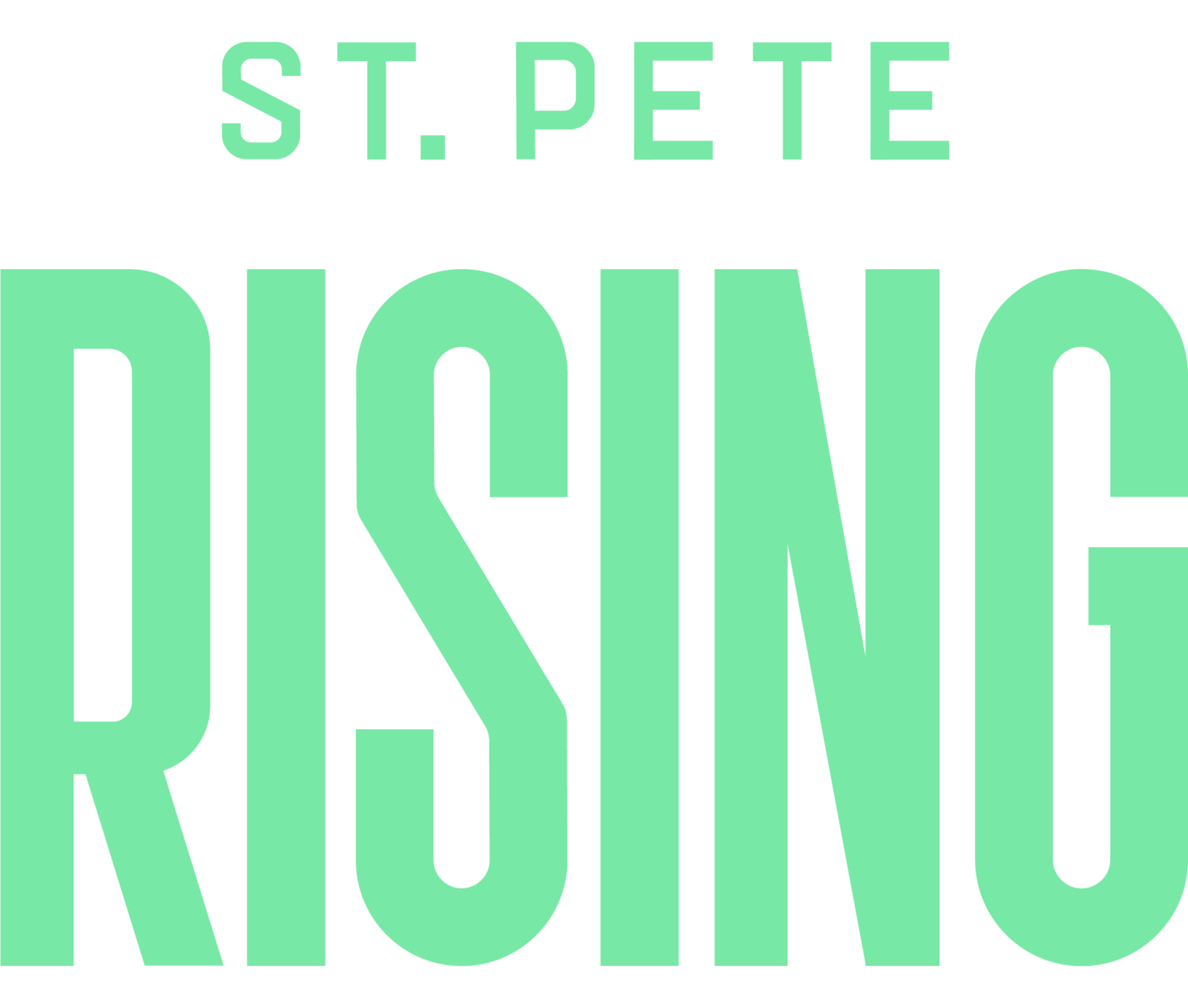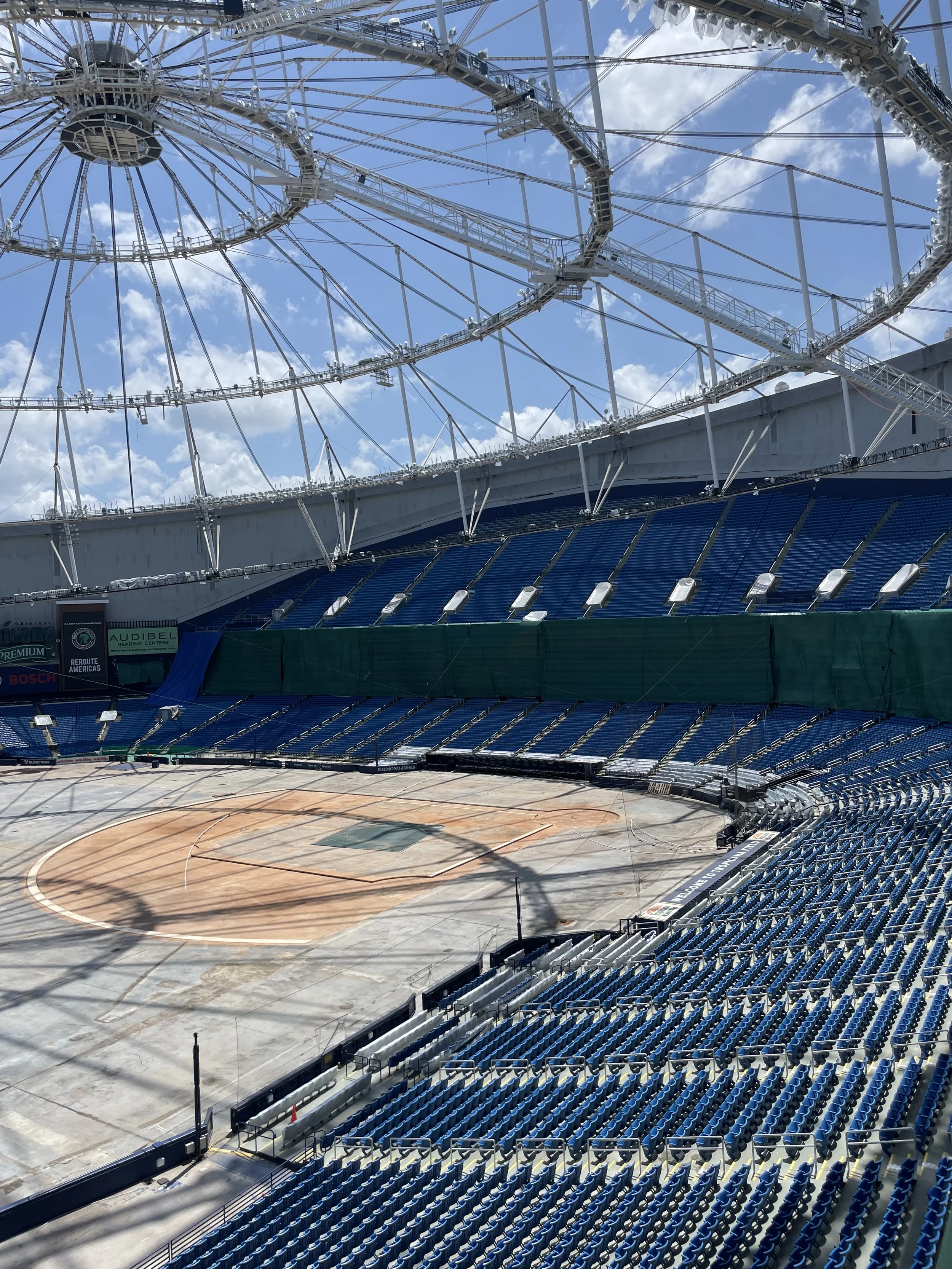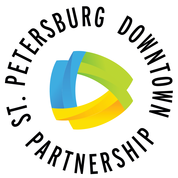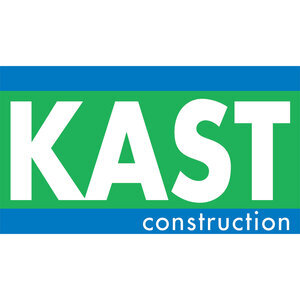Proposed
| Location | Class | Floors |
|---|---|---|
| 1 Tropicana Dr | Mixed-Use | TBD |
| Units | Completion | Website |
|---|---|---|
| TBD | TBD | N/A |
Renders
Location
News
Workers have officially installed the final roof panel at Tropicana Field in downtown St. Pete, marking a major milestone as the City of St. Petersburg prepares to welcome the Tampa Bay Rays back in 2026.
The new roof, built with a stronger and more weather resistant fiberglass membrane, is part of a more than $60 million renovation effort to restore the ballpark after 110 mile per hour winds from Hurricane Milton shredded the original roof late last year.
Although the Rays are only contracted to play at Tropicana Field through the end of the 2028 season, the City is required to provide the team with a suitable stadium for the full term of the agreement, prompting the need for repairs.
The city is working with Hennessy Construction Services and AECOM Hunt as general contractors for the project.
Roof installation began in August and accounts for more than $23 million of the total renovation cost.
Starting in the new year, the City of St. Pete will officially restart the clock for developers to submit proposals to redevelop the 86-acre Historic Gas Plant District in downtown St. Pete, marking the third time the city has sought bids for the site since 2020.
Mayor Ken Welch had initially planned to open a 30-day submission window in mid-November, but after receiving pushback from major developers, including Kolter Urban and Red Apple Group, as well as concerns from City Council, Welch agreed to delay the start until January 4th, 2026.
Proposals will now be due February 3rd, giving developers a total of 105 days since the city’s October 21st announcement.
The latest bid solicitation was triggered when the city received an unsolicited $6.8 billion proposal from Casey Ellison of Ellison Companies, Cathie Wood of ARK Invest, and Jonathan Graham of Horus Construction.
A trio of well-known business leaders have submitted a proposal to purchase and redevelop 95.5 acres of downtown St. Petersburg, including the Historic Gas Plant District.
Casey Ellison, CEO of Ellison Companies;Cathie Wood, the founder of global investment firm ARK Invest; and Jonathan Graham, President of Horus Construction are behind the effort. Baker Barrios would serve as the master planner architect.
The group submitted a 98-page unsolicited proposal to the City of St. Petersburg this morning outlining a $6.8 billion vision for a new mixed-use district anchored by innovation, housing, cultural institutions, and world-class event venues.
The project would be built in four phases over the next 17 years and will include flexibility to accommodate the Tampa Bay Rays should the team remain beyond 2028.
Blue netting now surrounds the steel framework of what’s left of Tropicana Field’s roof in downtown St. Petersburg as crews prepare to install the first set of roof panels.
Last October, winds of up to 110 miles per hour from Hurricane Milton shredded the stadium’s fabric roof, causing extensive interior damage.
Now, the City of St. Pete is on the hook for the repairs.
General contractors Hennessy Construction Services and AECOM Hunt are leading the $59 million repair project, with the new roof accounting for more than $23 million of that total.
“Repair progress is well underway at Tropicana Field,” Mayor Ken Welch wrote in a Facebook post Friday, sharing photos of the work.
One year after entering into a $6.5 billion redevelopment deal with the Tampa Bay Rays and national developer Hines, St. Pete City Council unanimously voted on Thursday to terminate the agreement.
The deal would have allowed the 86-acre Historic Gas Plant District be to redeveloped into a new mixed-use neighborhood with nearly 8 million square feet of space, including a $1.3 billion baseball stadium.
City Council’s vote was largely procedural, as the Rays and Hines had announced in March that they were withdrawing from the deal after missing key project milestones.
Mayor Ken Welch, who was a strong supporter of the project, addressed the termination in a statement following the vote.
“While the Rays’ decision is terribly disappointing, our mission was to adapt and refocus on our primary objective – the progress of our city,” said Welch. “And part of that mission is accomplished by today’s City Council vote.”
The City of St. Petersburg is moving forward with extensive renovations and repairs to make Tropicana Field playable for the Tampa Bay Rays in 2026.
In October 2024, Hurricane Milton's powerful winds shredded the stadium's fabric roof, allowing rain to pour into the venue. As a result, the stadium sustained significant water and wind damage, rendering it unusable.
In addition to damaging the roof, the storm also compromised critical infrastructure, audiovisual equipment, and the turf field.
Due to the extent of the damage, the Tampa Bay Rays will play their 2025 season at George M. Steinbrenner Field in Tampa.
City officials are hoping to have Tropicana Field ready for baseball in time for the 2026 season. In the meantime, due to the extent of the damage to the Trop, the Tampa Bay Rays will play their 2025 season at George M. Steinbrenner Field in Tampa.
Prominent Tampa Bay investor Thompson Whitney Blake is offering the City of St. Petersburg $260 million in an all-cash deal to buy the Gas Plant District following the Tampa Bay Rays' abrupt announcement of abandoning the stadium agreement.
"We, along with all of the other residents in town, have listened to a decade of dialogues, debates, pundits, and prognosticators, lawyers, and talking heads... In our opinion, this project needs someone to do what my mom has always said, 'put your money where your mouth is.' So, here we go," Blake, CEO of private equity firm Blake Investment Partners, wrote in a letter to Mayor Ken Welch and the St. Petersburg City Council.
The offer letter was sent on Thursday, March 13, shortly after the Tampa Bay Rays announced on social media that they were withdrawing from the $1.37 billion deal to build a new stadium in downtown St. Petersburg. The team cited unforeseen challenges from back-to-back hurricanes and prolonged negotiations as reasons for their decision.
Done Deals is a weekly column by St. Pete Rising spotlighting recent real estate market insight and significant deals happening in the Sunshine City and beyond. The following information is sourced from public records and trusted intel.
Have real estate news to share? Send us an email at hello@stpeterising.com.
Despite uncertainty surrounding the future of Major League Baseball in St. Petersburg, the City Council has voted to move forward with plans for a new $1.3 billion stadium for the Tampa Bay Rays and the redevelopment of the adjacent 86-acre Historic Gas Plant District.
During a meeting on Thursday, the City Council narrowly approved the issuance of $287.5 million in tax-exempt bonds with a 4-3 vote. These bonds will contribute to the $600 million in public funding for the stadium, along with $142 million allocated for infrastructure improvements in the reimagined district.
Council members Sandra Figgs-Sanders, Copley Gerdes, Brandi Gabbard, and Gina Driscoll voted in favor of the bond issuance, while Richie Floyd, Lisset Hanewicz, and John Muhammad opposed it.




















A newly completed white dome now crowns Tropicana Field, gleaming in the sun.
Inside, more than 200 workers are stretching the fabric roof, sealing seams, and moving into the next phase of repairs.
“The roof is back on. They are still doing some of the seaming and the final sealing, but in essence, the building is dried in,” said Beth Herendeen, Managing Director of City Development for St. Petersburg, during a media tour on Wednesday. “We have no concern about being open or ready for Opening Day on April 6th, 2026.”
Above the concrete field and thousands of empty seats, the roof’s PTFE fabric alternates between white and orange-tan panels. City Architect Raul Quintana noted the color variation will fade out by spring.